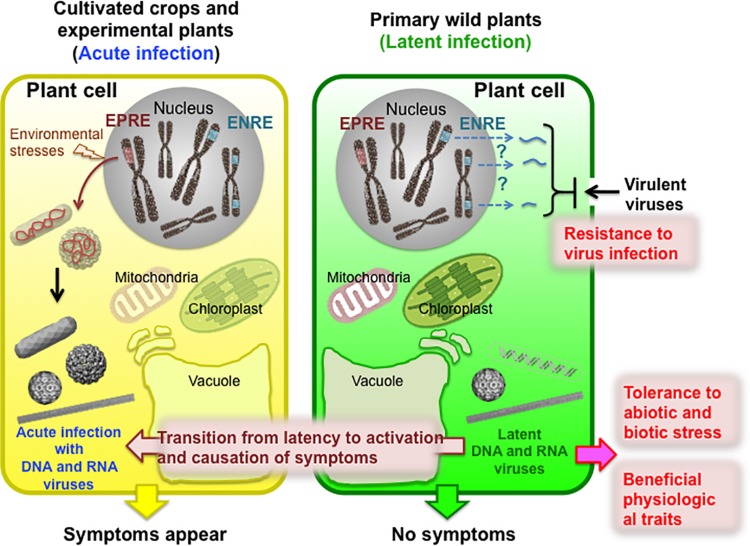FIGURE 1.
Schematic of positive and negative effects of latent virus infection on wild host plants in nature. Wild plants are often latently/persistently infected with viruses without exhibiting any apparent symptoms. Moreover, endogenous viral elements, such as endogenous pararetroviral elements (EPREs) and endogenous non-retroviral elements (ENREs), have become integrated into the genomes of some host plant species. The latent infection can occasionally transition to activation into an acute infection accompanied by the appearance of disease symptoms. This activation can occur due to vector-mediated transmission to cultivated crops, mixed infections with other viruses, environmental stresses, or the particular developmental stage of plant growth. However, latent/persistent infections can be of benefit to plants, such as by conferring resistance to infection by another virus, tolerance to abiotic or biotic stresses, or beneficial physiological traits that improve the lives of host plants.

